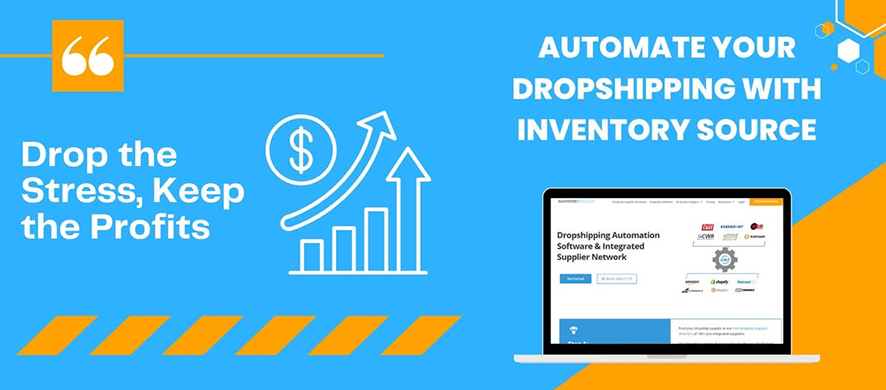
Reaching six figures in revenue is a huge milestone for any dropshipping business. It validates your niche, your product-market fit, and your ability to sell. But here’s the uncomfortable truth: for a surprisingly large number of dropshippers, that’s where the growth train stalls. Revenue flattens. Margins shrink. Workload explodes. What once felt like a fast-moving business starts to feel like pushing a boulder uphill.
So why do so many dropshipping stores stall at the six-figure mark? It’s not about luck. It’s not always competition. And it definitely isn’t because the model is broken. It’s about scale—and the infrastructure (or lack thereof) required to support it.
Contents
- The Myth of “More Sales = More Growth”
- The Operational Bottlenecks That Kill Momentum
- Why Six Figures Isn’t Scalable Without Systems
- Automation Platforms: The Growth Multiplier
- Case Study: Breaking the Plateau With Automation
- How to Prepare Your Store to Scale Beyond Six Figures
- Final Thoughts: Growth Isn’t Just About Selling More
The Myth of “More Sales = More Growth”
Many dropshippers assume that if they just run more ads, test more products, or build more stores, growth will continue. But that assumption runs into a brick wall if the business’s foundation can’t handle more volume.
Growth Without Infrastructure = Chaos
When your backend operations are built for hustle, not scale, every new sale adds friction instead of momentum. You start spending more time managing what you already have than building what’s next.
- Orders pile up faster than you can fulfill them.
- Customer service overwhelms your inbox.
- Inventory misalignment causes stockouts and refunds.
- Pricing becomes inconsistent as supplier costs shift.
At some point, each additional dollar of revenue creates more stress than profit. That’s the real six-figure trap—and automation is often the only way out.
The Operational Bottlenecks That Kill Momentum
To move past $100K in revenue—and sustain growth—you need to replace hustle with systems. But most dropshipping stores hit these five bottlenecks before they ever get the chance.
1. Manual Order Processing
If you’re still submitting orders by hand, you’re already behind. Copying customer data into supplier dashboards or AliExpress windows is manageable at 10–20 orders a day. At 50–100, it becomes a full-time job. Errors creep in, fulfillment slows down, and customer complaints start stacking up.
2. Fragmented Inventory Management
Working with multiple suppliers is common for advanced dropshippers. But when stock levels aren’t automatically synced, you’re playing inventory roulette. One unexpected stockout on a best-seller can lead to:
- Angry customers demanding refunds.
- Lost ad spend on products you can’t deliver.
- Damage to your store’s reputation and repeat purchase rate.
Manual checks or CSV imports aren’t sustainable past a certain SKU count. Real-time inventory syncing becomes mission-critical.
3. Slow and Inconsistent Customer Support
Most eCommerce stores underestimate the volume of customer service required at scale. “Where’s my order?” emails, refund requests, and basic product inquiries can flood your inbox daily. If you’re the one replying to every message, you’re robbing time from growth tasks like marketing and supplier negotiations.
4. Static Pricing and Shrinking Margins
When you’re moving large order volumes, even small price shifts from suppliers or shipping carriers can devastate margins. Without automated repricing tools, most stores operate on outdated numbers. This means:
- Undercharging for high-cost items.
- Unknowingly cutting into your profit on popular SKUs.
- Missing opportunities to dynamically increase prices on high-converting listings.
5. Mental Fatigue and Founder Burnout
This one’s sneaky. As your business grows, so do the decisions you have to make. More products. More suppliers. More customer issues. Without automation, your role becomes less strategic and more reactionary. You’re not building—you’re babysitting.
Why Six Figures Isn’t Scalable Without Systems
There’s a huge difference between reaching six figures and sustaining growth beyond it. The systems that got you to $100K won’t take you to $500K. At scale, the margin for error shrinks and the need for efficiency skyrockets.
Exponential Volume = Exponential Risk
Let’s say your order error rate is 2%. At 100 orders a month, that’s 2 headaches. At 1,000 orders, that’s 20. And if your customer support, fulfillment, or inventory processes aren’t airtight, the compounding effect gets brutal.
Manual Tasks Don’t Scale Linearly
Hiring a VA might give you some breathing room, but it doesn’t solve the core problem: manual tasks are still happening. And humans make mistakes. Automation gives you consistent execution, even when you’re asleep, on vacation, or testing a new product line.
Scalability Requires Redundancy
Redundancy doesn’t mean inefficiency—it means resilience. Automation tools provide fallback systems: auto-reorder when stock is low, flag pricing anomalies, alert you to fulfillment issues. Without these safeguards, your business becomes fragile at higher volumes.
Automation Platforms: The Growth Multiplier
So what does automation actually look like in a high-performing dropshipping operation? It’s not just about convenience—it’s about reclaiming time, preserving margins, and unlocking new growth. Here’s how specific platforms help break the six-figure ceiling.
1. DSers, AutoDS, and Similar Tools
These platforms automate order placement, tracking number syncing, and even customer notifications. They’re essential for scaling order volume without increasing your workload.
- Auto-fulfillment: Process hundreds of orders without lifting a finger.
- Tracking updates: Automatically pushed to your store and sent to customers.
- Bulk order features: Save hours on repetitive clicks.
2. Inventory Syncing Platforms (e.g., Inventory Source, Syncee, Spocket)
Keeping inventory aligned across multiple suppliers is a nightmare manually. These tools connect your supplier data directly to your storefront, eliminating oversells and out-of-stock errors.
3. Repricing Tools (e.g., PriceYak, Repricer, Ecomdash)
Automated repricing means your listings adjust based on cost or competitor data, helping you stay profitable without constant manual review.
4. Customer Service Platforms (e.g., Gorgias, Zendesk, Richpanel)
These tools organize support tickets, auto-respond to common questions, and help you stay ahead of customer expectations without spending all day in your inbox.
5. Analytics Dashboards and Alert Systems
Platforms like Lifetimely or Google Data Studio (connected to your store) offer real-time views of your KPIs, allowing you to track margins, top-selling SKUs, and customer LTV without spreadsheet gymnastics.
Case Study: Breaking the Plateau With Automation
Let’s look at a hypothetical, but common scenario:
A mid-tier electronics dropshipping store hits $120K/year in revenue. The founder is overwhelmed. Every day involves:
- Submitting 30–50 orders manually.
- Answering 15–20 support tickets.
- Checking supplier stock by logging in to three dashboards.
- Running ads but pausing frequently due to fulfillment constraints.
They decide to implement:
- DSers: Order automation.
- Gorgias: Customer service macros.
- Syncee: Inventory syncing.
- PriceYak: Auto-repricing tied to supplier cost.
Within two months, average daily workload drops from 8 hours to 2. The founder reinvests that time into testing high-ticket products, running new campaigns, and building supplier relationships. Revenue hits $250K within six months—with no new hires.
How to Prepare Your Store to Scale Beyond Six Figures
You don’t need to overhaul your business overnight. But you do need to be intentional. If your goal is to go beyond six figures, your backend has to be built for scale—not survival.
Step 1: Audit Your Repetitive Tasks
List everything you do more than once a day or once a week. That’s your automation roadmap. If you’re constantly answering the same questions or processing the same orders, it’s time to outsource that task—to software.
Step 2: Implement One System at a Time
Start with your biggest bottleneck. For most, it’s order fulfillment or customer support. Fix that, then move to inventory and pricing. Trying to automate everything at once is overwhelming and unnecessary.
Step 3: Set Growth Targets Backed by Capacity
Don’t just say “I want to hit $500K.” Say “I want to handle 1,500 orders a month with the same level of effort I’m putting in today.” Build your infrastructure around volume, not vanity metrics.
Final Thoughts: Growth Isn’t Just About Selling More
Many dropshipping businesses stall at six figures not because the demand isn’t there—but because the systems aren’t. Scaling isn’t just about selling more; it’s about delivering more with consistency, efficiency, and sanity intact.
If you want to grow beyond six figures, automation isn’t optional—it’s your growth engine. It’s what turns a high-performing side hustle into a sustainable, scalable business. And it’s how you get out of the weeds and back into the driver’s seat.

